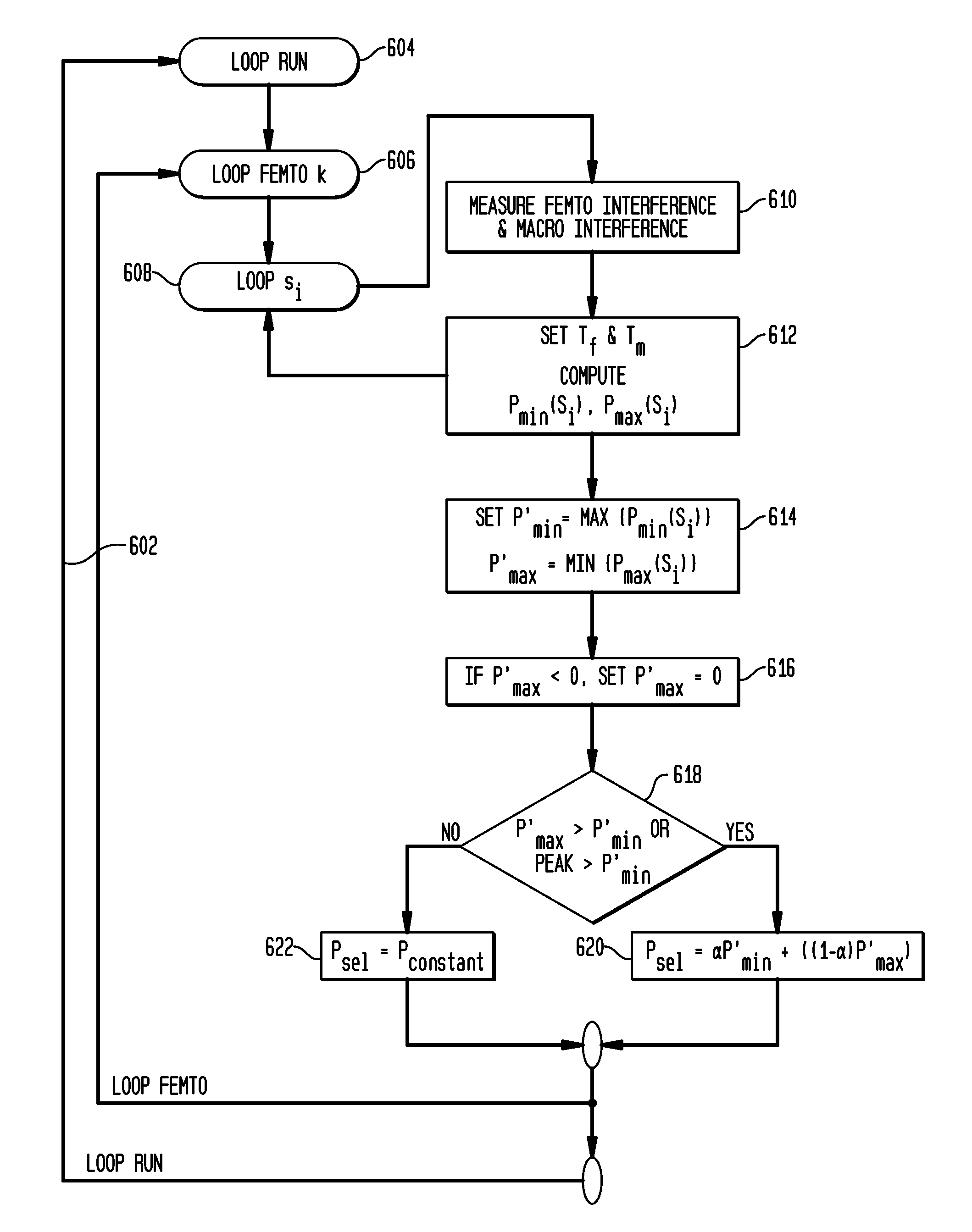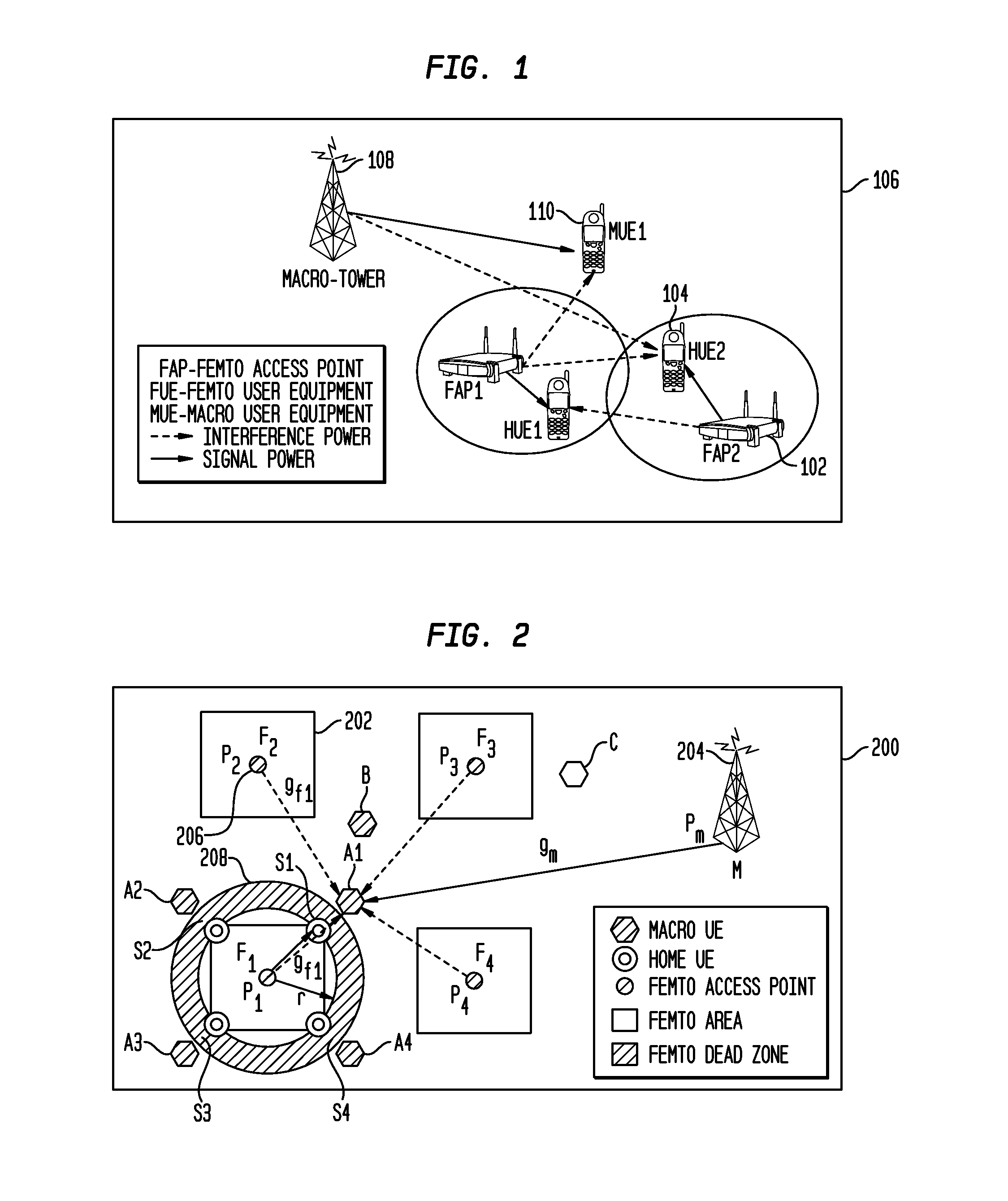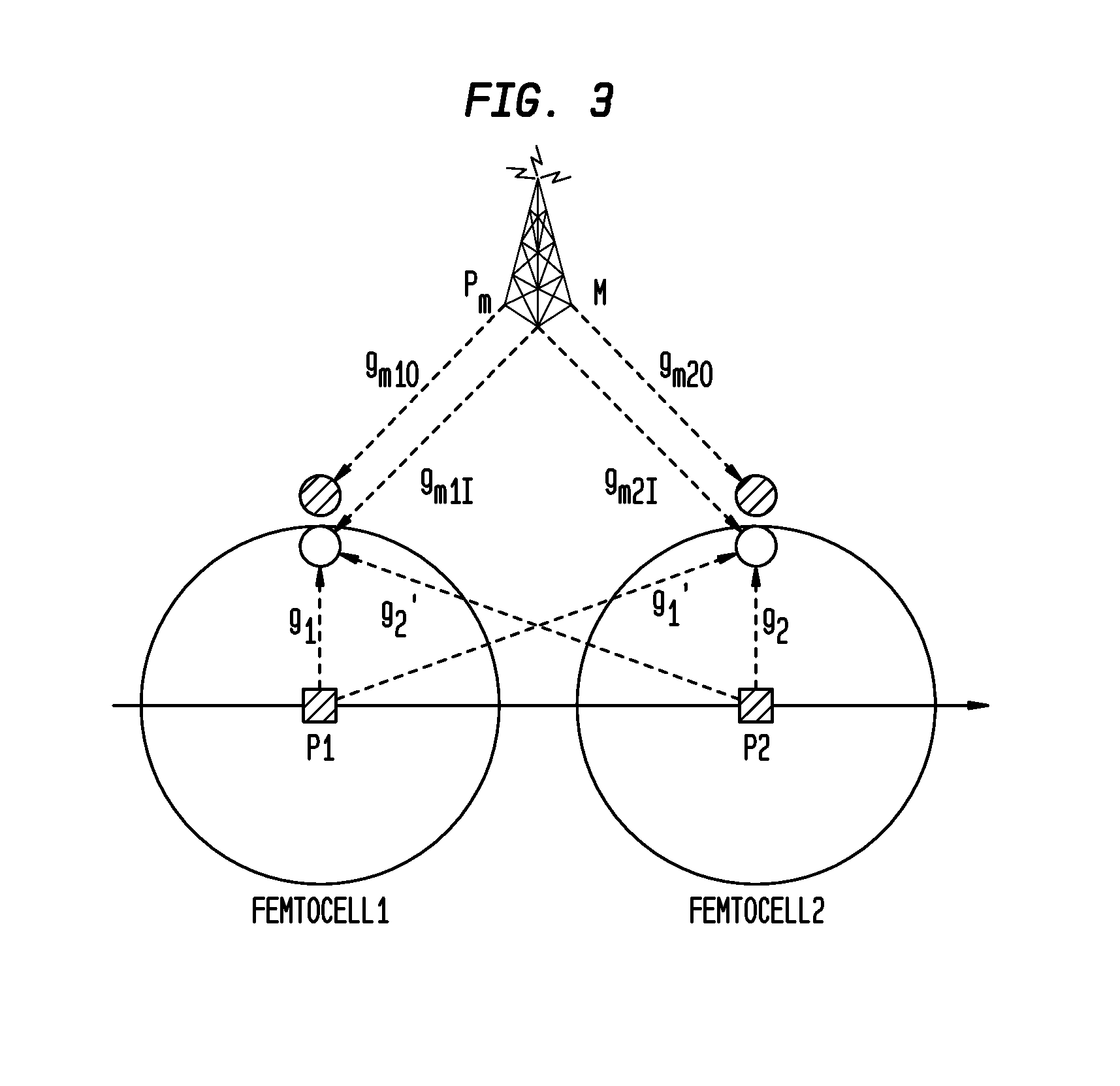Feasibility, Convergence, and Optimization of LTE Femto Networks
a femtocell and network technology, applied in the field of long-term evolution (lte) femtocells, can solve the problems of underutilization of available resources, little public knowledge of solutions, and ineffective lte femtocell approaches, so as to reduce the interference among femtocells, reduce the femto ue rate, and achieve the effect of similar overall performan
- Summary
- Abstract
- Description
- Claims
- Application Information
AI Technical Summary
Benefits of technology
Problems solved by technology
Method used
Image
Examples
Embodiment Construction
[0025]There are in general two types of optimization approaches: a) Centralized ; and b) Distributed. In a centralized approach, the optimization algorithm is executed in an entity outside the femtocells. States of the femtocells are monitored and data are sent back to the centralized entity for optimization. The centralized entity may perform policy setting as well as optimization, but the frequency of adjustments is usually relatively low. The advantage is that the centralized entity has a better view of the femto network and may be able to provide a globally optimized solution. However, centralized optimization takes longer to execute and requires more coordination between femtocells and the optimizer. This may cause a scaling problem when the number of femtocells is very large. In the distributed approach, decision and power adjustment is made locally at each femtocell, using information it collects regarding to the status or effect of its neighboring femtocells, such as receive...
PUM
 Login to View More
Login to View More Abstract
Description
Claims
Application Information
 Login to View More
Login to View More - R&D
- Intellectual Property
- Life Sciences
- Materials
- Tech Scout
- Unparalleled Data Quality
- Higher Quality Content
- 60% Fewer Hallucinations
Browse by: Latest US Patents, China's latest patents, Technical Efficacy Thesaurus, Application Domain, Technology Topic, Popular Technical Reports.
© 2025 PatSnap. All rights reserved.Legal|Privacy policy|Modern Slavery Act Transparency Statement|Sitemap|About US| Contact US: help@patsnap.com



